
FEATURED EXAMPLES
Blood, sweat & takeaways
Girl model
UDITA
Mangetout
INGREDIENTS
INTENTIONS
Pop the bubble
Cross cultures
Show capitalist evils
Tell the truth
Teach economic geography
Show what’s possible
TACTICS
Have a theory of change
Choose an audience
Make it familiar
Bring managers into view
Involve consumers
Fund the unions
Humanise workers
Workers take the mic!
Lie to tell the truth
Silence your critics
RESPONSES
This is so sad
Capitalism is sh*t
I won’t buy it
Liar! Fraud!
It’s so badly mad
Who to believe?
I’m humming that music
These people are inspiring
IMPACTS
Now I know
Now we’re talking
I shop differently now
Corporations change
Governments intervene
Debts are paid off
Can’t tell
“You can’t Ctrl+C, Ctrl+V resistance“
By Lucian Harford
IN BRIEF
Student Lucian Harford has taken the ‘Geographies of material culture’ module at the University of Exeter. He’s been watching trade justice documentaries, analysing the comments on their followthethings.com pages, and making sense of them using a draft copy of ‘The followthethings.com handbook for trade justice activism’. He knows a thing or two about how trade justice documentaries work and what they can do. He’s’s been asked to imagine meeting a filmmaker who’s planning a new trade justice documentary. What advice could he give? Well, it turns into a bit of a rant. He’s been riled up by these films and the ways that they’ve been discussed on their followthethings.com pages. He ends up giving some stark, unexpected advice. We can’t give you the spoiler here though.
More about this page.
We are slowly piecing together a followthethings.com handbook for trade justice activism and are publishing draft pages here as we write them. This is an ‘advice’ page. The main text is an example of student work from the ‘Geographies of material culture’ module which followthethings.com CEO Ian ran at the University of Exeter in the 2024-25 academic year. Students watched 8 films, and read their pages on followthethings.com (with the expeption of an unfinished film called The ginger trail). They were asked to pair the comments brought together on each of the films’ followthethings.com pages with the appropriate ingredients phrases (naming their intentions, tactics, responses and impacts – show in bold below) being drafted for the Handbook. Using these phrases as a pattern language (see FAQs), students were tasked to work out how specific intentions (e.g. improve workers’ pay & conditions) needed specific tactics (e.g. flip the script) to generate different kinds of responses (e.g. this is disgusting), which could generate different kinds of impacts (e.g. audiences are empowered). [NB pages about each of these ingredients are coming soon] At the end of the module, students were asked to imagine that they had met someone who was about to make their first trade justice documentary. Drawing on what they had learned in the module, what advice could they give them on how to make it effective?
When it escapes the cinema room and ambushes you in Aisle 3, Sainsbury’s, Exeter, EX1 3PF. Let me contextualise. December 2024. Deep in my nectar price era 🤑, zigzagging Pinhoe Sainsbury’s. I’m on a mission. Marx would’ve hated me. Classic case of commodity fetishism (Cook et al., 2002).

29th of March 2025. Day after my last Geographies of Material Culture seminar. I’m back in Sainsbury’s. Innocent enough, right? Wrong. Aisle 3. Midway between the mangetout and the courgettes. Boom – my brain betrays me.
It whispers: “Tesco’s our dear friend.” 😉
I froze. Kenyan broccoli gave me side-eyes. Ghanaian pineapples look like they’re organising a strike. Jamaican bananas are silently mourning my moral compass. 💀 It was no longer a food shop but a postcolonial reckoning under migraine-inducing strip lighting……..cheers (Cook and Harrison, 2003). Thanks, material culture films. You broke me. But like… in a good way? I guess consumption with a conscience is better than nothing (Wenzel, 2011). Now I’m spiralling. If a film can do that to me (burrow into my nectar choices and trolley). Is that… ✨effective✨? 🤔 Do you even know what ✨effective✨ means? Here’s a clue. Have a theory of change.

No, it’s not just some academic buzzword. It’s your ‘how’. HOW does ‘X’ lead to ‘Y’ (Duncombe, 2023). Think about it like a chain. Your activism’s intentions need the right tactics, as they likely to lead to specific responses and impacts. Example: If you want your film’s response – IDK – to be ‘capitalism is sh*t‘ and its impact to be ‘I shop differently now‘ 💁 (or go bigger: corporations change!), then it needs the correct intentions and tactics to hopefully lead to this.


That’s a theory of change 101! Easy, right…….?? NOPE. Thats what REALLY pisses me off. 😤 ⚠️ Disclaimer: This might turn into a crazy rant ⚠️
Right. Say you want to make a film to take down capitalism (slay). If that’s where you’re starting, go back and watch Mark Phillips’ Mangetout (1997). It dropped right before the 1999 Battle of Seattle, a pivotal moment when people really started calling out the global trade injustice screwing over the Global South (Bannister and Bergan, 2023).
Mangetout popped the bubble as it was the ‘first time British viewers were confronted with their most popular supermarket, Tesco’ (Millar in Cook et al., 2025, np). And it crossed cultures of the 🫛pea. From farm 🇿🇼 to shelf 🇬🇧.
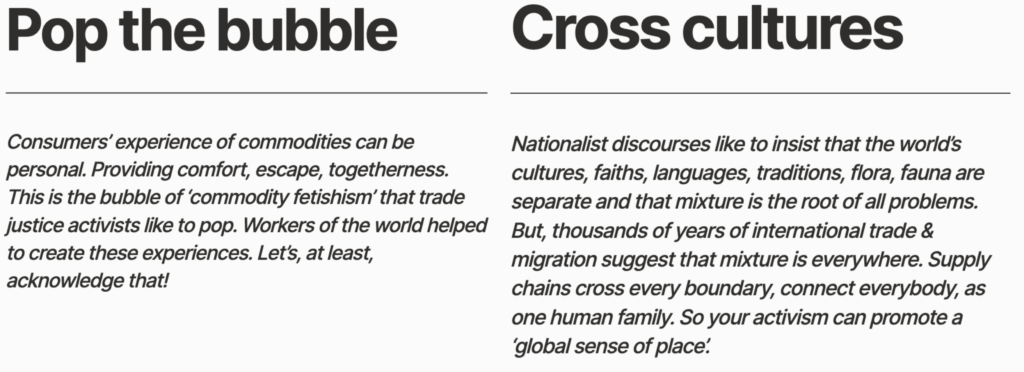
It introduced Grannie Chabvundira, ‘a 25-year-old mangetout caterpillar inspector’ (Philips in ibid), who drops the line: “life is too hard” (Mangetout, 2005 time 41.12), becuase of F***ing Tesco’s!!! 😳
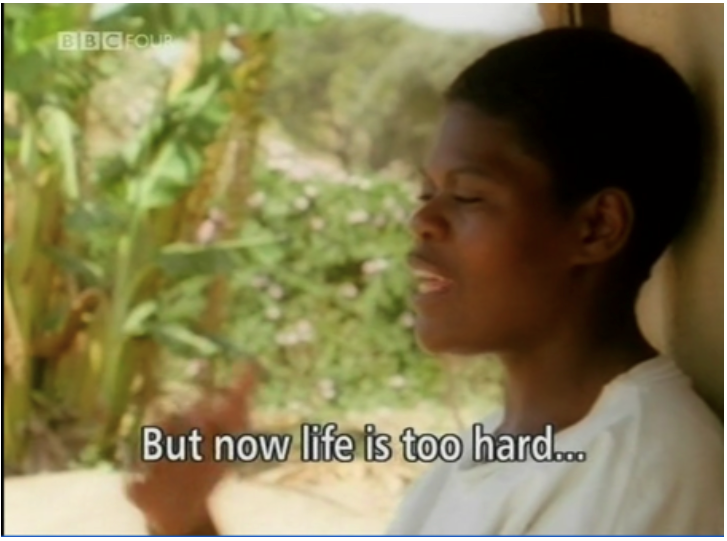
Unlike Grannie, Tesco manager Mark Dady was brought into view. On the farm, Mark and his team ‘were treated like Gods’ (O’Mally in Cook et al., 2025, np). ‘It was sickening’ (ibid). 🤢

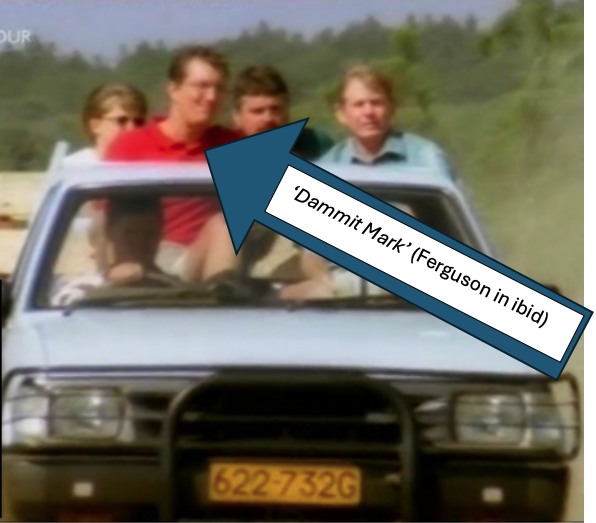
Afterwards, ‘Tesco became evil [or sh*t] for me’ (Chapman in ibid). I too questioned my damn shopping habits and thought ‘I won’t buy it!’ ⛔

Seems a good impact? You might think, ‘to be ✨effective✨, I gotta do what Mangetout did’. Not so fast, young activist, it’s not that simple. 😝 Introducing Blessing. ‘Chief mange-tout picker at Chiparawe’ (Hall in ibid). He has never been to Tesco.

Hopefully, the penny has dropped for you as it did for me. Blessing’s life isn’t anyone’s to interpret. There’s no blueprint for ✨effective✨ activism, no one path to impact. People, contexts, and strategies vary, too (Duncombe, 2024).
It’s like me saying Mangetout existed to make JUST ME and YOU 🫵 feel something. #Embarrassed #Selfish 😖 So. You should choose an audience. Nisbet and Aufderheide (2009) say mobilisation begins with specificity. Your film doesn’t need everyone. Just the right people.

Take Nick Broomfield’s 2006 film Ghosts, it knew who to talk to. Its ‘X’ was to show capitalist evils and blow the lid off the Morecambe Bay disaster to ‘establish our complicity as consumers in the workers’ fate’ (McCahill in Allen et al., 2025 np). 🫥
Take this scene. Read the subtitles! Ai Quin & her co-worker are in a Tesco store. Before they harvested cockles in Morecambe Bay, they’d picked spring onions Tesco. Ghosts ripped the packaging open and said: ‘They’re not just onions. They’re testimonies of struggle’ (Cook & Woodyer, 2012).
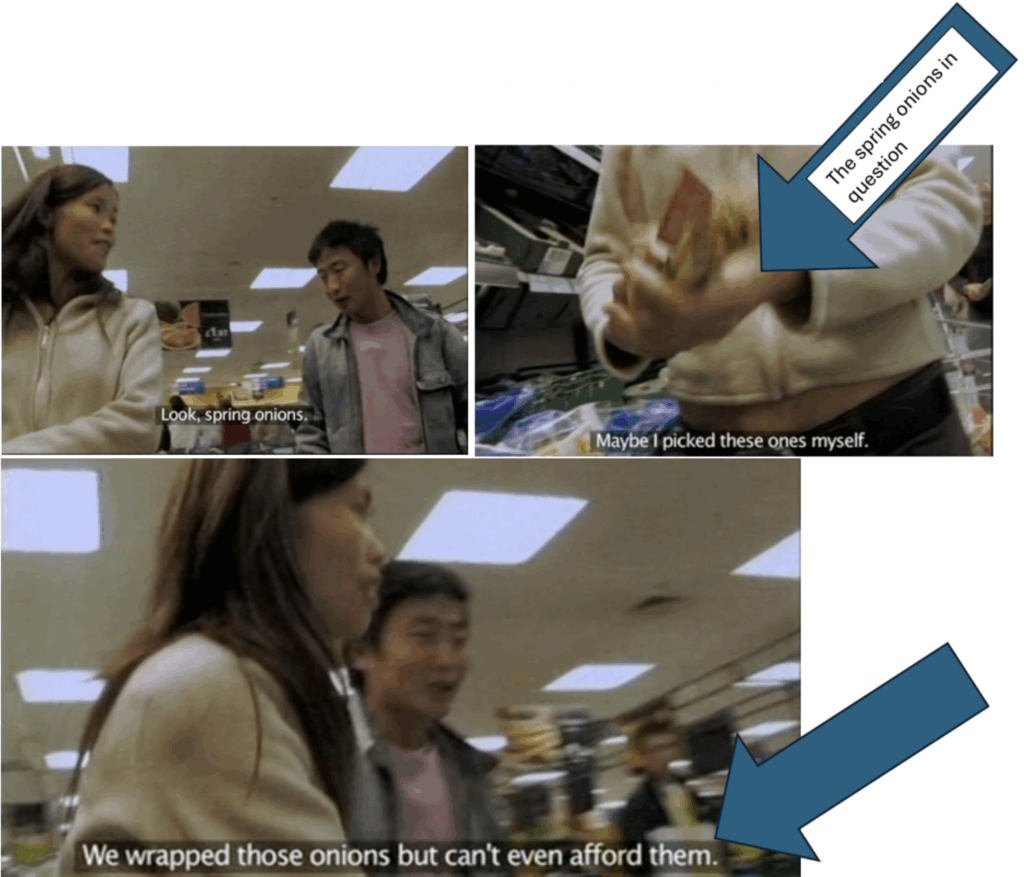
Ghosts ‘showed the dark side of globalisation’ (Bradshaw in Allen et al., 2025, np). It didn’t just say the politics of consumption are broken. It ‘made for an uncomfortable viewing’ (Tinniswood in ibid), making Tinniswood feel globalisation’s fracture lines (Hartwick, 2000). 🤕 Great! Now I know about ‘the appalling circumstances’ (Tang in Allen et al., 2025, np) of the Morecambe Bay disaster, and that Ghosts encouraged audience to donate momey to pay off the debts of the drowned workers’ famililes in China. A couple of ‘Ys’ for this film. 🙌

That’s good impact, but…… in my opinion … MORECAMBE BAY SHOULDN’T HAVE HAPPENED IN THE FIRST PLACE!!!! 🤬
I’m getting riled up. Let’s talk irony and absurdity. Ilha das Flores, is a 1989 pseudo-doc that teaches economic geography as ‘deep as a punch in the stomach’ (@nacaotutumbaie3559 in Pavalow, 2025 np). It’s about ‘capitalism, told through the story of a tomato’ (Delaney, in ibid).

The film, particularly this scene at the end (read subtitles 👇), made me feel like ‘an alien watching a documentary about inequality on Earth’ 👽 (@Canalinfantilreinabowwfriends in ibid).
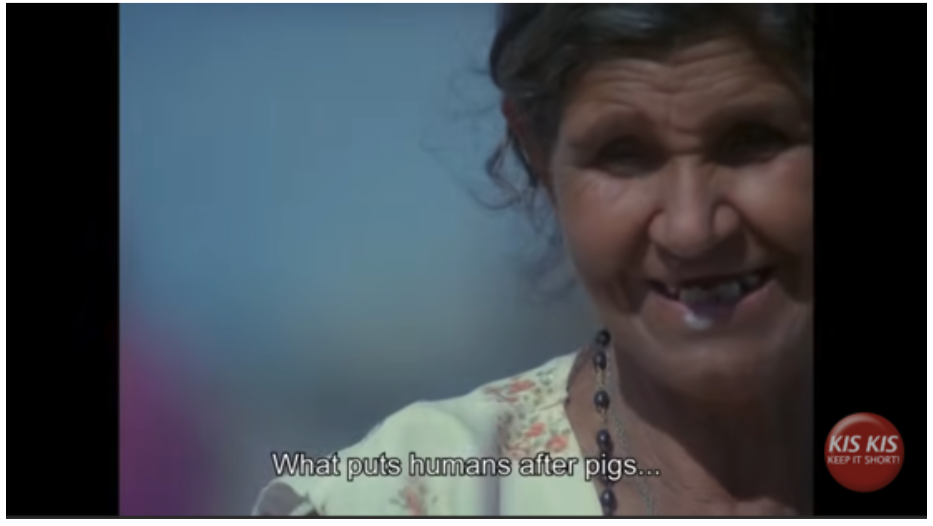
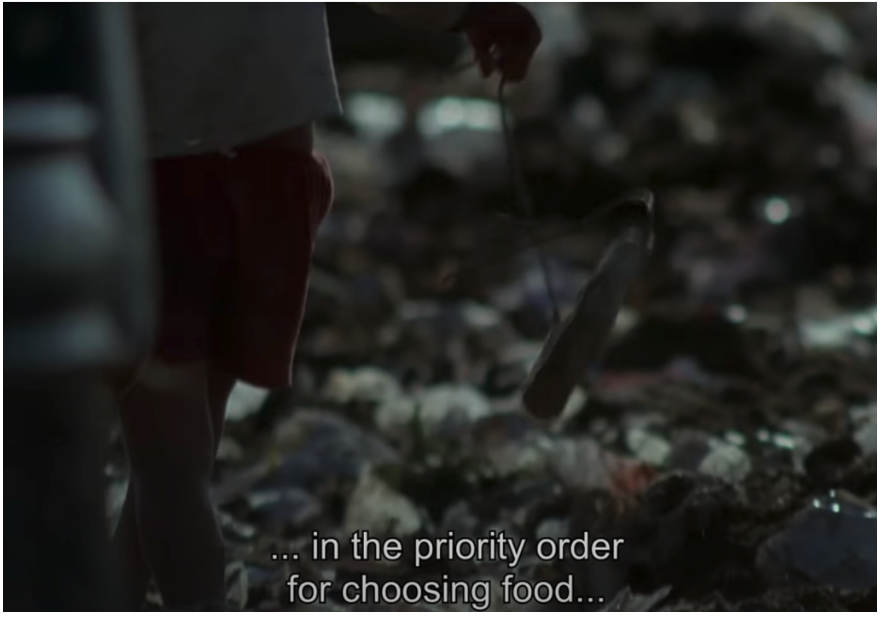
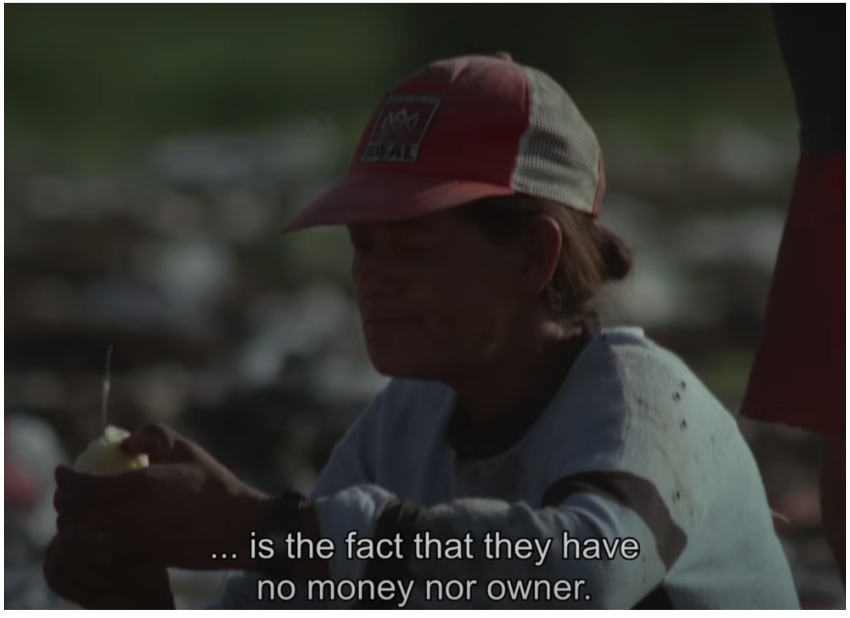
People raved! ‘What an incredible documentary’ (@rosangelafigueiredo6082 in ibid), and it was crowned ‘the best Brazilian short film ever made’ (Anon in ibid)! 👑 It’s haunting, clever, and people ‘remember it very well’ (@AndersonPedron in ibid). Its impact? I can’t tell…🤷

What now? Let’s try another example. Your intention could be to pop the bubble – because ‘when it comes to food, we are spoilt for choice, but would we feel the same if we knew the human cost?’ (Anon in Clarke et al., 2025 np) – and your tactics could be to make it familiar and involve some consumers. ‘X’ clearly leads to ‘Y’?


This is what BBC 3’s Blood Sweat and Takeaways series did. It followed ‘six typical young British food consumers’ (Cuthbertson in ibid) who were dumped into the sweat and steam of Southeast Asia’s food production lines. One, ‘[Manos] was annoying from the first 5 mins’ (HairHolic in ibid) after kindly being hosted at a supply chain worker’s home.
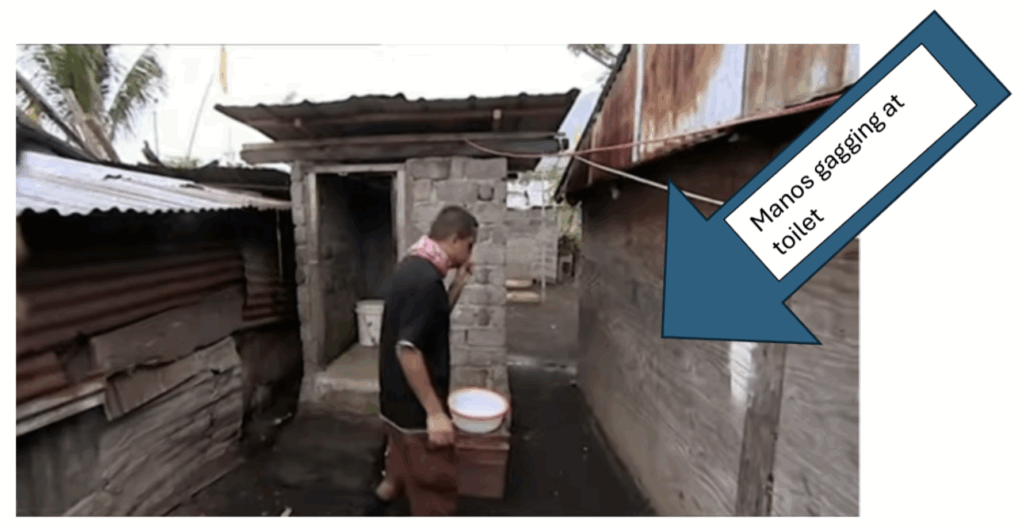
Another, Olu, then body slams Manos into a glass wall in a tuna factory. 🫠

It was like watching Love Island sweatshop edition! These consumers were insane! Honestly, it was ‘so excruciating that you’re tempted to’ (Ferguson in ibid) turn off this badly made ‘scripted drama bs’ (keikurooka5105 in ibid) 🤬.
Nåls (2018) was right. By involving the wrong consumers/characters, you risk your audience sitting back partially detaching, watching suffering like it’s another episode…..or worse fully detaching.
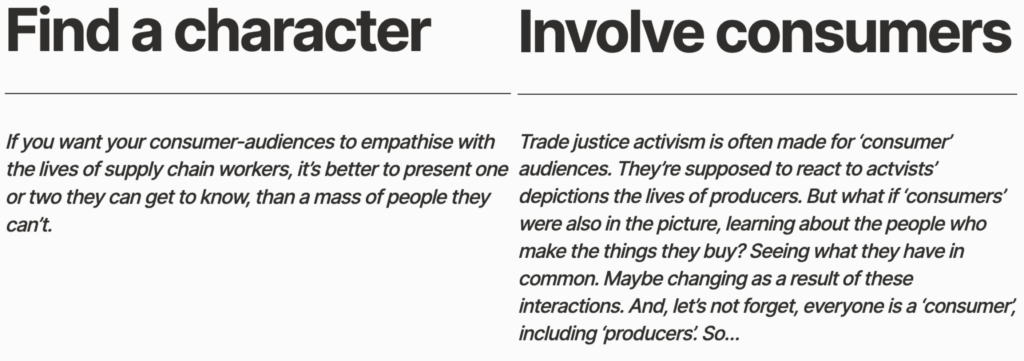

Need proof? Read below 😬 👇😂

I know its a little off topic but does anyone know what song it is at 36.14, I really like it (Source: hyperventil8 2012 np link).

The song is called ‘We Walk’ by The Ting Tings (Source: TopshelferDude 2012 np link).

Does anyone know the song @ 53:50 i want to know please reply D: (Source: theMarcus4131 2012 np link).

Song is ‘Kids’ by MGMT (Source: TopshelferDude 2012 np link).

F**k you for putting Chemical Brothers and Justice on such a sh*tty documentary (Source: anevershiftingsun 2012 np link).
Discussion of Blood, sweat & takeaways in Clarke et al (2025, np).
Okay, I need to breathe. You need to breathe. This rant is not over. ☠ Let’s talk about another example. And lies. Yes – LIES. Your doc could lie to tell the truth. Sorry, not sorry. 😈

Stam (2016) said it. Documentaries are not ‘pure’, never were. Never will be. 🫢 Take Primark: On the Rack. The 2008 documentary followed a thing (a sequin top) by using ‘hidden cameras’ (McDougall in Adley et al., 2025 np) to uncover ‘the use of child labour in the finishing of cheap clothes’ (ibid). Stam would love this 🤣
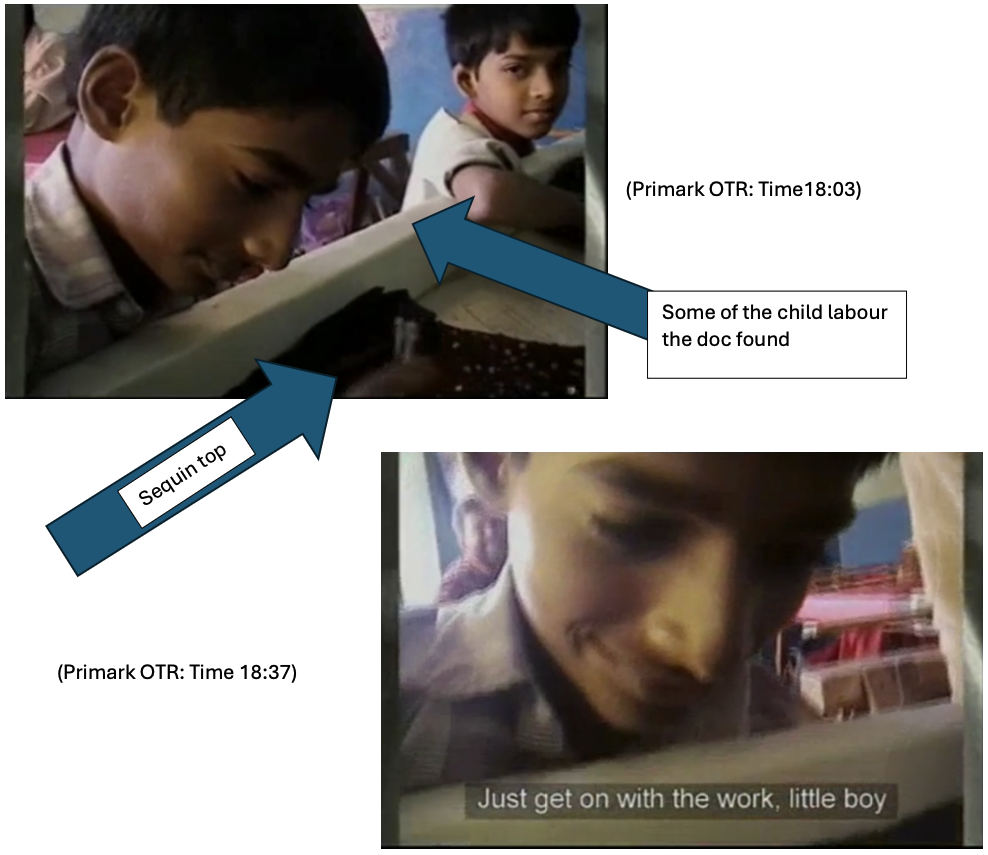
This was connective aesthetics – grabbing your senses, stirring emotions, making you realise that every time you throw on a £3 Primark tee (Cook et al., 2000). But you’re also watching ‘three boys in a Bangalore workshop testing stitching’ (Anon in Adley et al., 2025 np). So this crashed headfirst into the very myth it challenged. 🙄 And Primark tried to silence its critics. They cried LIAR, FRAUD!!!

The ‘footage could not be genuine’ (Primark in ibid). Primark even set up a website: ‘www.primarkresponse.com’, showing ‘what Primark had to do to expose this false claim and clear our name’ (ibid). What a MESS! Now. Over to one commenter, Siddy_06 🥲 : ‘What are we meant to dooo?! I wish someone would tell me, If I get what I would buy from another shop, who can guarantee they are not doing the same thing?’ (in ibid). YES, SIDDY_06. SCREAM IT. LOUDER. FOR. THE. PEOPLE. IN. THE. BACK. Who to believe!!!!!???? 😭

Levine (2007) would probably argue that SIDDY_06’s scepticism wasn’t just ignorance or rejection – it was a complex, socially driven response to fear, stigma, and mistrust of authority in the trade justice movement. Just when you’ve understood that. Now, enter Wallace Heim (2003) who says the power of a documentary lies in sowing seeds for future rethinking – quiet mindset changes that bloom into something bigger.
Thanks for the mind f*ck Wall-Ace. But WTF is one meant to do! Scatter ✨effective✨ seeds into the wind and hope something grows (see Duncombe 2024)!? Actually….. maybe Wall-Ace has a point. 😑 If your film just tells the truth and holds it up to the light, maybe beautiful ✨effectiveness✨ will bloom. Honesty is the best policy, isn’t it?
TBF, the film Udita shows what’s possible by telling the truth. Screw the official story 🥱. The real truth lies in those who live and tell their stories (Zeng, 2017).
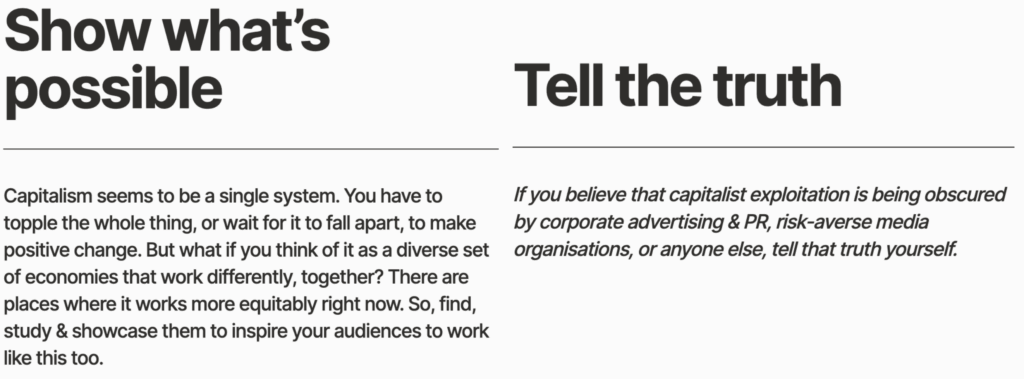
Udita plunges you into the chaos before, during, and after the Rana Plaza disaster to reveal ‘an extraordinary and raw insight into the lives of the female factory workers in Bangladesh’ (Posh in Barker et al., 2025 np). It humanises garment workers 🙋🏽 by finding their unions ✊🏽 and letting them take the mic 🎤.
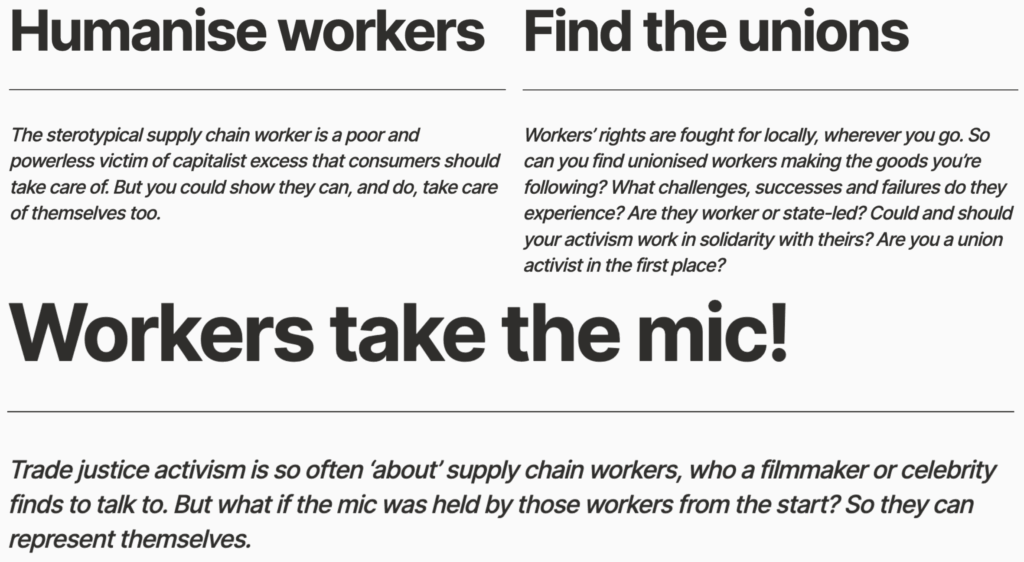
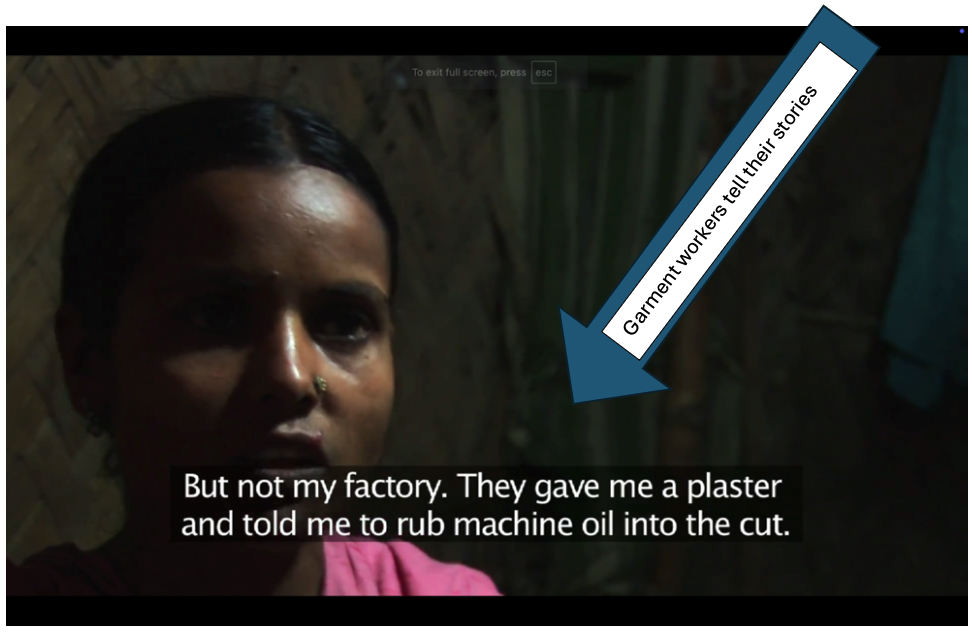
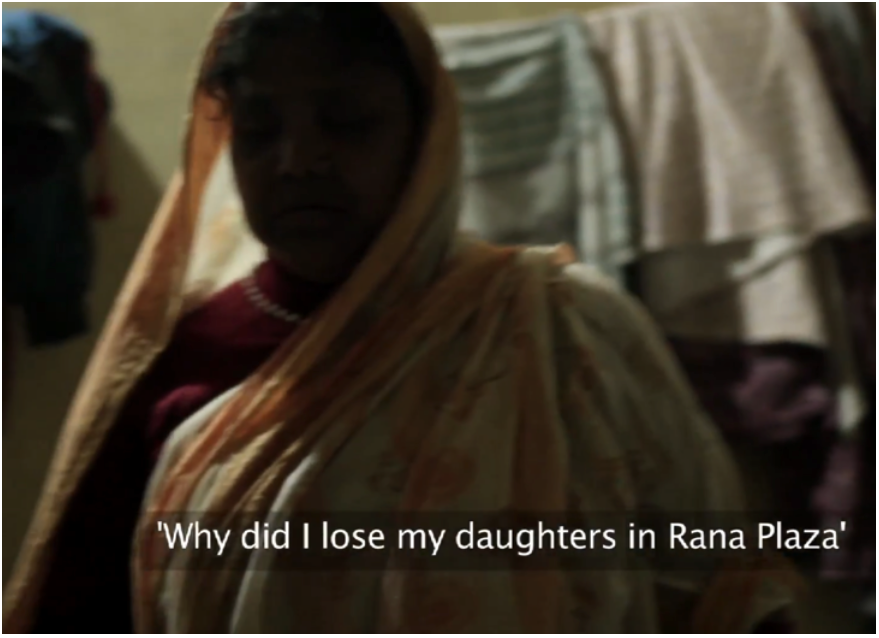
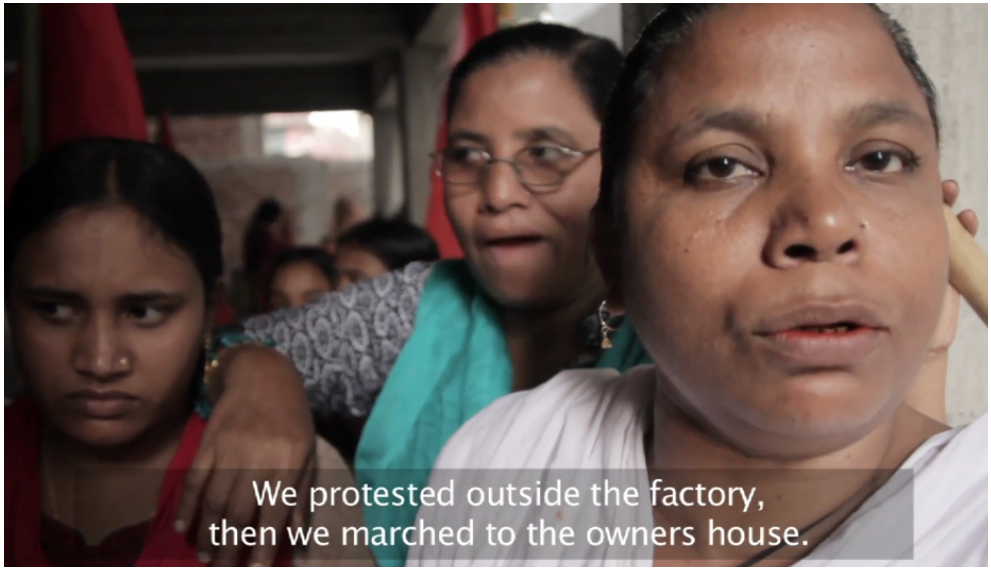
It was ‘heart breaking’ (McCulloch in ibid) to watch; I know how they feel. This is so sad. ‘My heart goes out to the aged grandmother who lost her two daughters at Rana Plaza’ (Schon-Meier in ibid). 😢 But wait – pause the sadness for a second. ‘A lot of films and articles portray garment workers as victims’ (Minney in Ibid), but in Udita, these people are ‘inspiring on a global level’ (Hoskins in ibid)!

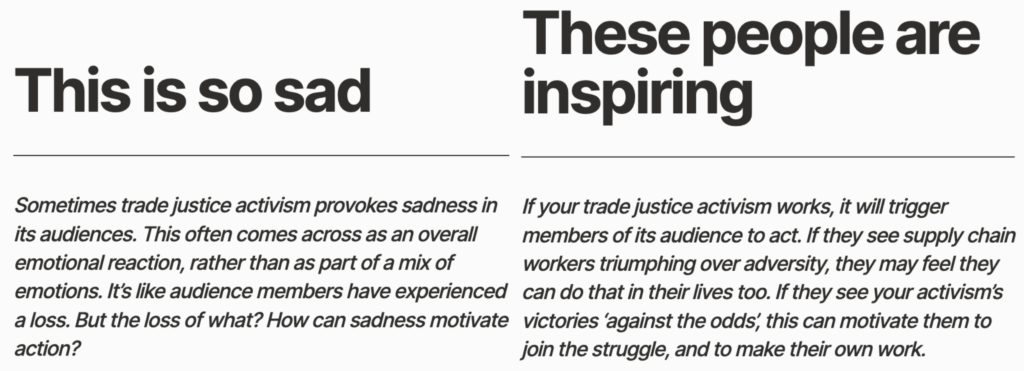
OMG – THEN – ‘Trade unionists, workers’ rights activists, and local community groups will gather’ (Salmon in ibid). NOW WE’RE TALKING. BOOM! 💥 ! Governments started intervening! There was an ‘acceleration in legislative change in France’ (Evans in ibid) because ‘Rana Plaza was covered by newspapers, petitions of NGOS, film, and documentaries’ (ibid). Like this.
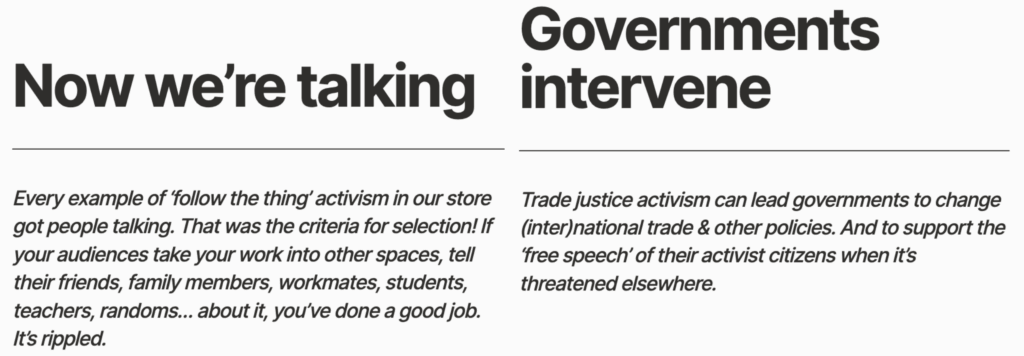
There’s a well evidenced ‘X’ to ‘Y’ sequence here. You intend to show what’s possible with trade justice activism and to tell the truth about workers’ involvement in it. You use tactics that can humanise them, by finding their unions and letting them take the mic. This could lead to audiences responding with sadness about their struggles and/or inspiration about their achievements. And your film’s impacts could simply be the talk that it sparks about these tradwe justice struggles and the chance that – added to other activists’ work on this topic – this could help encourage governments to intervene.
But WAIT! ✋ Don’t grab your camera just yet. Time to pop your bubble again (for the last time). Just cus it worked in Bangladesh doesn’t mean you can Ctrl+C, Ctrl+V resistance (Demos, 2010). Grassroots power matters, but remember Morecambe…..? Rana Plaza…? They should have never F***ing happened in the first place!! 🤬. NGL, when the whole global economy runs on exploitation, chasing ✨documentary effectiveness✨ just looks like damage control (Harvey, 2010).
RIGHT, I’ve humoured this long enough!! Here’s the truth! I CAN’T TELL YOU HOW TO MAKE AN ✨EFFECTIVE✨ TRADE JUSTICE DOCUMENTARY! 😭 Cus if you’ve learnt anything on this commodities-lit, capitalist-infused, GEO3123 rant. It’s this! THERE IS NO SINGULAR CORRECT WAY! 😩 IT ALL ADDS UP! Real change is messy! It’s chaos! Contradiction and unexpected moments are what really move the trade justice movement along (Connor and Phelan, 2013).

Now this is … awkward. After all this ranting, yes technically all the films I told you about were effective … just in their own ways. #AWKWARD 🤫🫣
HOWEVER! Here’s my theory of change for you. To be effective in the trade justice movement DON’T make a documentary. 🙅 Mic – Drop 🎤 Put the camera down. Take your budget, kit, and big activist dreams. Give them to the unions, co-ops, and grassroots groups already knee-deep in it. Do it for Grannie & Blessing in Mangetout. For Ai Qin & coworkers in Ghosts. For the boys in Primark: On the Rack. For the women in Udita. Supply chain workers don’t need retakes to show struggle. They live it! 💔
Rant Over.
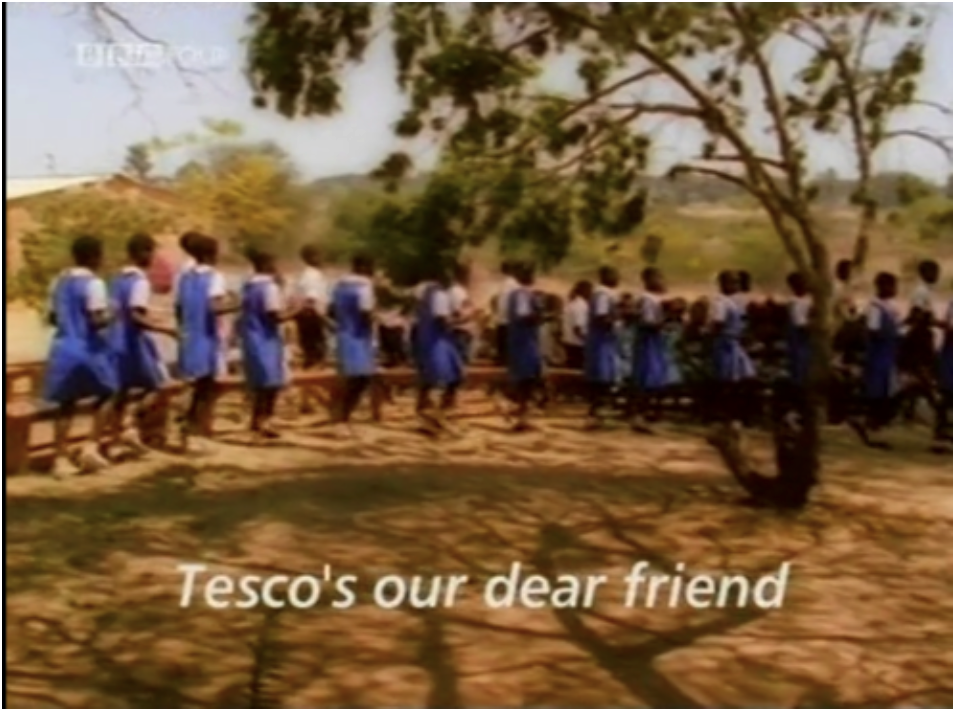

SOURCES
Patricia Aguiar, Jorge Vala, Isabel Correia & Cicero Pereira (2008) Justice in our world & in that of others: belief in a just world & reactions to victims. Social Justice Research, 21, 50-68.
Theo Barker, Joe Collier, Annabel Baker, Lizzie Coppen & Henry Eve (2025) UDITA (ARISE). (followthethings.com/udita.shtml last accessed 2 May 2025)
Clive Barnett & David Land (2007) Geographies of generosity: beyond the ‘moral turn’. Geoforum 38(6), 1065-1075.
Tim Bartley & Curtis Child (2014) Shaming the corporation: the social production of targets & the anti-sweatshop movement. American sociological review 79(4) 653–679
+26 sources
Hélène Bohyn (2025) Omnibus Or Not, Due Diligence Is a Must: Policy Breakdown. Better Cotton, 31 March (https://bettercotton.org/omnibus-or-not-due-diligence-is-a-must-policy-breakdown/ last accessed 22 April 2025)
Gavin Brown & Jenny Pickerill (2009) Space for emotion in the spaces of activism. Emotion, Space and Society 2(1), 24-35
Stella Bruzzi (2018) From innocence to experience: the representation of children in four documentary films. Studies in documentary film 12(3), 208–224
Rosemary Campbell-Stephens (2021) Educational leadership & the Global Majority: decolonising narratives. Springer Nature.
Doyle Canning & Patrick Reinsborough (2012) Lead with sympathetic characters. (https://beautifultrouble.org/toolbox/tool/lead-with-sympathetic-characters last accessed 2 May 2025)
Lilie Chouliaraki (2010) Post-humanitarianism: humanitarian communication beyond a politics of pity. International Journal of Cultural Studies, 3(2), 107–126.
Harriet Clarke, Ben Thomson, Victoria Bartley, Katie Ibbetson-Price, Emma Christie-Miller & Harry Schofield (2025) Blood, Sweat & Takeaways. (followthethings.com/blood-sweat-takeaways.shtml last accessed 2 May 2025)
Ian Cook et al (2025) Mangetout. (followthethings.com/mange-tout.shtml last accessed 2 May 2025)
Ian Cook & Tara Woodyer (2012) Lives of things. in Eric Sheppard, Trevor Barnes & Jamie Peck (eds) The Wiley Blackwell companion to economic geography. Oxford: Wiley-Blackwell, 226-241
Amy Coplan (2011) Understanding empathy: its features & effects. in Amy Complan & Peter Goldie (eds.) Empathy: philosophical & psychological perspectives. Oxford: Oxford University Press, 2-18
Benjamin Cuff, Sarah Brown, Laura Taylor & Douglas Howat (2016) Empathy: a review of the concept. Emotion Review, 8(2), 144-153.
Stephen Duncombe (2023) A theory of change for artistic activism. The journal of aesthetics and art criticism 81(2), 260-268
Stephen Duncombe (2024) Æffect: the affect & effect of artistic activism. New York: Fordham University Press
Alice Evans (2020) Overcoming the global despondency trap: strengthening corporate accountability in supply chains. Review of International Political Economy, 27(3), 658-685
Adele Hambly, Elaine King, Andy Keogh, Camilla Renny-Smith, Ed Callow, Joe Thorogood & Vicky Alloy (2025) Girl Model: The Truth Behind The Glamour. (followthethings.com/girl-model.shtml last accessed 2 May 2025)
Irene Hadiprayitno and Sine Bagatur (2022) Trade Justice, Human Rights, and the Case of Palm Oil. in Elena V. Shabliy, Martha J. Crawford & Dmitry Kurochkin (eds) Energy Justice: Climate Change Mitigation and Adaptation. Cham: Palgrave MacMillan, 157-172
Wallace Heim (2003) Slow activism: homelands, love & the lightbulb. Sociological review 51(2), 183-202
Deena Kemp (2025) Comparing disgust and sadness: examining the interaction of emotion & information in charity appeals. Journal of Social Marketing (online early).
Roman Krznaric (2007) Empathy and the Art of Living. Oxford: Blackbird Collective
Genevieve LeBaron, Remi Edwards, Tom Hunt, Charline Sempéré & Penelope Kyritsis (2022) The ineffectiveness of CSR: understanding garment company commitments to living wages in global supply chains. New Political Economy, 27(1), 99-115.
Margaret A. McLaren (2019) Global gender justice: human rights & political responsibility. Critical horizons 20(2), 127-144
Daniel Miller (2001) The poverty of morality. Journal of Consumer Culture, 1(2), 225–243.
Jan Nåls (2018) The difficulty of eliciting empathy in documentary. In Catalin Brylla & Mette Kramer (eds) Cognitive Theory and Documentary. Cham: Palgrave Macmillan, 135-148.
Kate Nash & John Corner (2016) Strategic impact documentary: contexts of production & social intervention. European journal of communication 31(3), 227–242
Tony Roberts & Chris Lunch (2015) Participatory video. In Robin Mansell and Peng Hwa Ang (eds) The International Encyclopedia of Digital Communication and Society. London: Wiley, 1-6.
Tillman Wagner, Richard Lutz & Barton Weitz (2009) Corporate hypocrisy: Overcoming the threat of inconsistent corporate social responsibility perceptions. Journal of Marketing 73(6), 77-91
Erik Olin Wright (2015) How to be an anticapitalist today. Jacobin, 12 February
Image credits
Icon: conversation (https://thenounproject.com/icon/conversation-6769395/) by kliwir art from Noun Project (CC BY 3.0)
Sainsburys Exeter Store: Lucian Harford (used with permission).
Handbook screengrabs: followthethings.com
Blood, sweat & takeaways screenshots: credit BBC.
Girl model screenshots: credit Carnivalesque Films
UDITA – credit Rainbow Collective
Mangetout: credit BBC
SECTION: advice
Written by Lucian Harford, edited by Ian Cook (first published June 2025)
![]()
